12 People Who Discovered a Creepy Reality About Their Close Friend

Hey! I have an invitation for you. Pack your bags, and let’s head down to the world’s most visited city: Paris! The city of love, the city of blinding lights, or whatever you want to call it. Our goal is to uncover as many secrets as possible regarding the world-famous Musée du Louvre. Are you up for it? Grab your travel book and bon voyage!
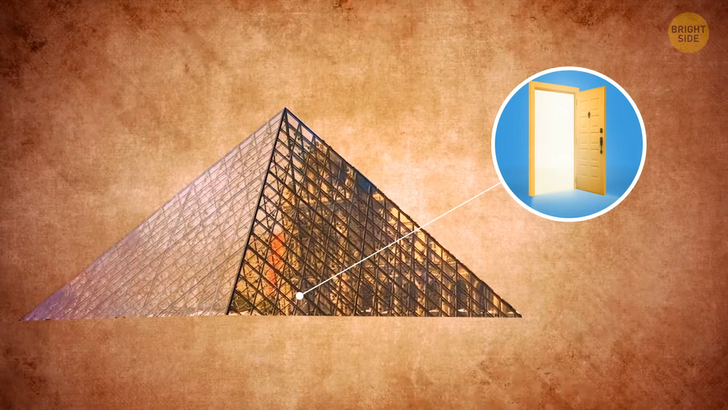
The Louvre makes a big impression if you’re visiting it for the first time. The traditional French Renaissance architecture is mixed with some more modern elements, like the Louvre Pyramid. And that’s our first stop today. To get inside the museum, you can go through the huge glass pyramid sitting right there in the Louvre’s courtyard.
If you’re wondering what’s the deal with this Pyramid, let’s stop here for a few minutes and learn some more about it. The Louvre Pyramid hasn’t been here since the beginning. After all, the Louvre’s main building — aka the Louvre Palace — dates back to 1190. But before it looked like what you see today, this place was a castle. Full of moats and dungeons and... not dragons, because those aren’t real. Unfortunately.
Anyways, the palace was commissioned by French King Philip II. Oh, and you can check out some of the Medieval Louvre in the museum’s basement. The Louvre only became a museum quite recently, historically speaking. In 1793, after the French Revolution, the nation decided that this building would be used to display France’s prized collection of art.
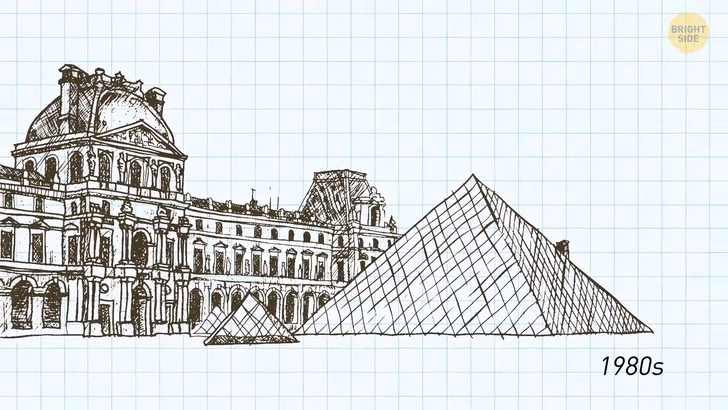
It wasn’t until the 1980s that the idea of the glass pyramid came along. Then President François Mitterand issued a big renovation of the Louvre. The project was called “Grand Louvre,” and it included the construction of a new entrance for visitors. By the 80s, the museum had already been receiving millions of visitors per year, and the entrance would often get crowded. And that’s when foreign architect Ieoh Ming Pei comes along. Mitterrand hired Pei to build an entrance that would connect the museum’s three pavilions.
And if you asked me, I’d say he did a pretty good job. We’re talking about 200 tons of glass and iron. Not to mention that this glass — the so-called Diamond Glass — was specially designed to be completely transparent, without any green or blue tint to it. Pei wanted visitors to have a clear view of the main buildings without the glass interfering with it. It took 2 years just to get the glass color right. It also took a while before Pei decided he was going to build a pyramid.
He experimented with designing a cube and even a hemisphere. But since the original building doesn’t have any curves, this would make the courtyard piece too out of context. So he decided to build a pyramid instead, inspired by the ones in Egypt. After all, the Louvre holds an immense collection of ancient Egyptian artifacts, so that kind of makes sense? Just a wild guess here.
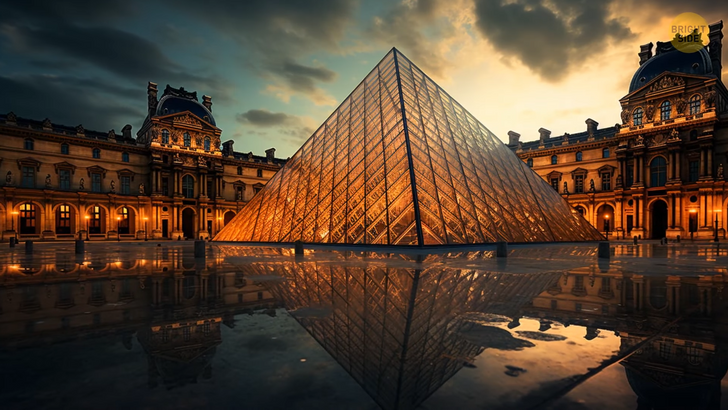
The thing is, the French are pretty critical. And once the Louvre Pyramid was finished in 1988, it became the center of a very heated debate. Public opinion was unsettled by such a modern construction. Today, people take all kinds of weird selfies with the Pyramid. But back then, locals were saying that modern architecture had nothing to do with the Louvre’s Renaissance style or even the history of the building. Some even said that the Pyramid wasn’t “French enough.” Yikes.
Standing in line to get inside the Louvre, you can’t help but wonder: how do people clean this huge glass Pyramid? We’re talking glass slopes, so this sure isn’t an easy feat. In the beginning, the museum administration apparently hired mountaineers to climb it and clean it. And some still do this job nowadays, when the robot built for this task can’t clean all the dirty spots off the glass. I’m not joking, the Louvre Pyramid is cleaned by a robot. You know what they say, the future is here.
Once you’re down the escalators, you’ll notice that this awesome Pyramid you were taking pictures with upstairs has an inverted face to it downstairs. It serves as a skylight to the Carrousel du Louvre, which is like an underground shopping mall. Or the museum’s main lobby. Hey, look, there’s an Apple Store. Except that French people pronounce it “Epell”.
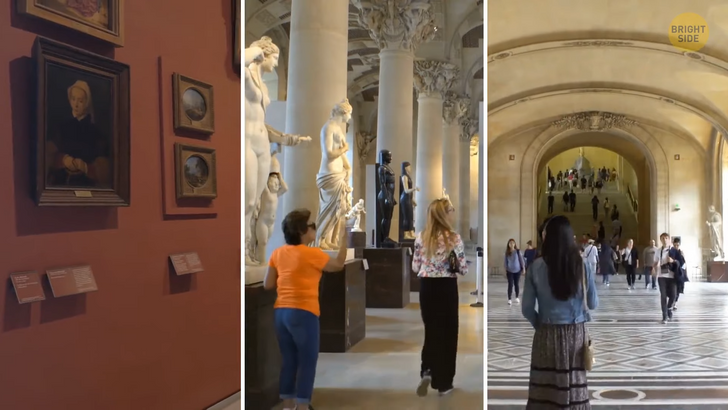
You’ll have the option to choose from three different wings of the museum: the Richelieu, Sully, or Denon. I say we begin with Denon. You’ll understand why in a bit. Did you know that the Louvre exhibits around 35,000 pieces of art? That’s why it’s virtually impossible to visit everything in one day. If you’re an art lover, you’ll have to come back here for more visits. But to see all of the pieces of art, spending around 30 seconds on each, you’d have to visit the Louvre over 100 times. And that’s not counting restroom and lunch breaks.
You get the picture, right? The museum is huge. That’s why it takes about a 10-minute walk to get from the lobby entrance to the Louvre’s most famous painting: the Mona Lisa. But since you got here early, you manage to take good pictures of this Da Vinci masterpiece.
A little-known fact: the Mona Lisa was once stolen from the Louvre. It was stolen at night by a man called Vincenzo Peruggia. He was an employee of the museum, and investigators think he slept inside the Louvre to perform what is known as “the greatest art theft of the 20th century.” Apparently, the next morning, Vincenzo simply walked out of the museum with the Mona Lisa hidden among his belongings. The Mona Lisa was gone for almost two years until the painting was recovered in Italy. Who knows, maybe she enjoyed the trip back to her homeland.
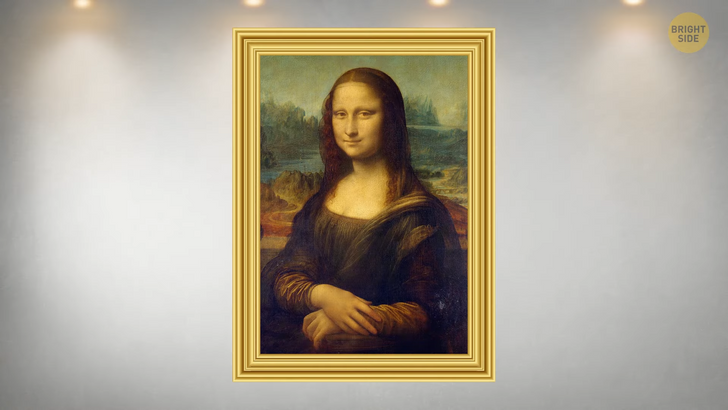
If you’re an art history buff, you might know that the Mona Lisa has lots of theories revolving around it. The painting is shrouded in mystery, that’s a fact. A strong case has been made that the Mona Lisa could be a self-portrait of Da Vinci himself. Historians have compared Da Vinci’s face and that of the Mona Lisa, and guess what? They appear to be strikingly similar.
Also, a 2010 study done by Italy’s Committee for Cultural Heritage found that there is a collection of symbols hidden in the painting. These are only visible through highly technological magnifying lenses, but they showed that Leonardo inscribed an LV inside Mona Lisa’s right eye. Experts guess that this is Da Vinci’s signature. But the other symbols, a CE in the left eye and a 72 in the arch of the background bridge are still a mystery.
But enough about La Gioconda. We want to get to the Sully wing of the museum. Along the way, you see some people sitting in front of paintings with a drawing book or even a canvas. Is that allowed? Yup! This is a very interesting feature of the Musée du Louvre.
The museum houses an art school called École du Louvre, and students of this school, as well as other Parisian institutions, can get permits to sit in front of paintings and copy them. This way, promising young artists can learn directly from the source. They copy works of Renoir, Monet, or Poussin, trying to figure out the techniques these painters used. Hm, can I sign up for this... please?
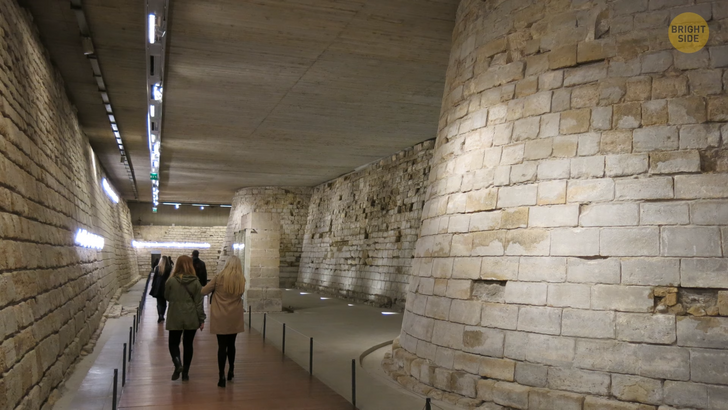
To finish your tour, you’re visiting the ancient moat we talked about earlier. You know, the one that was part of the original Louvre when it was still a castle. Thanks to the archeological excavations that happened in the 1980s, this part was uncovered and has been open for visitation since 2016. You can even see a miniature model of what the original castle looked like.
And if you’ve visited other landmarks in Paris, you’ll notice that it’s pretty similar to the Conciergerie. I wonder if they’ve ever thought about producing cheese down here? It does seem like the perfect place. Oh well, hope you enjoyed learning some secrets of the world’s most famous museum. See you next time.











